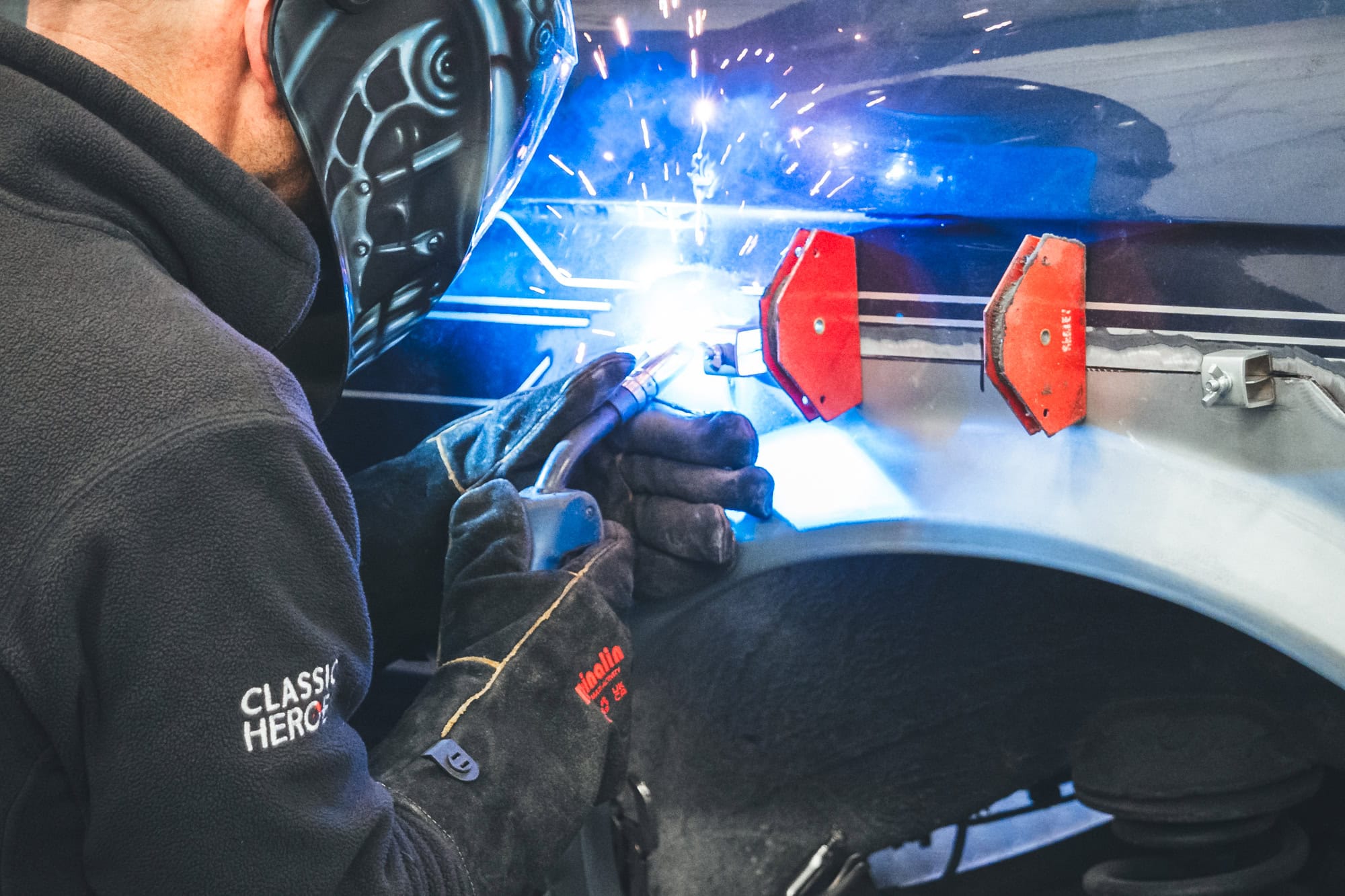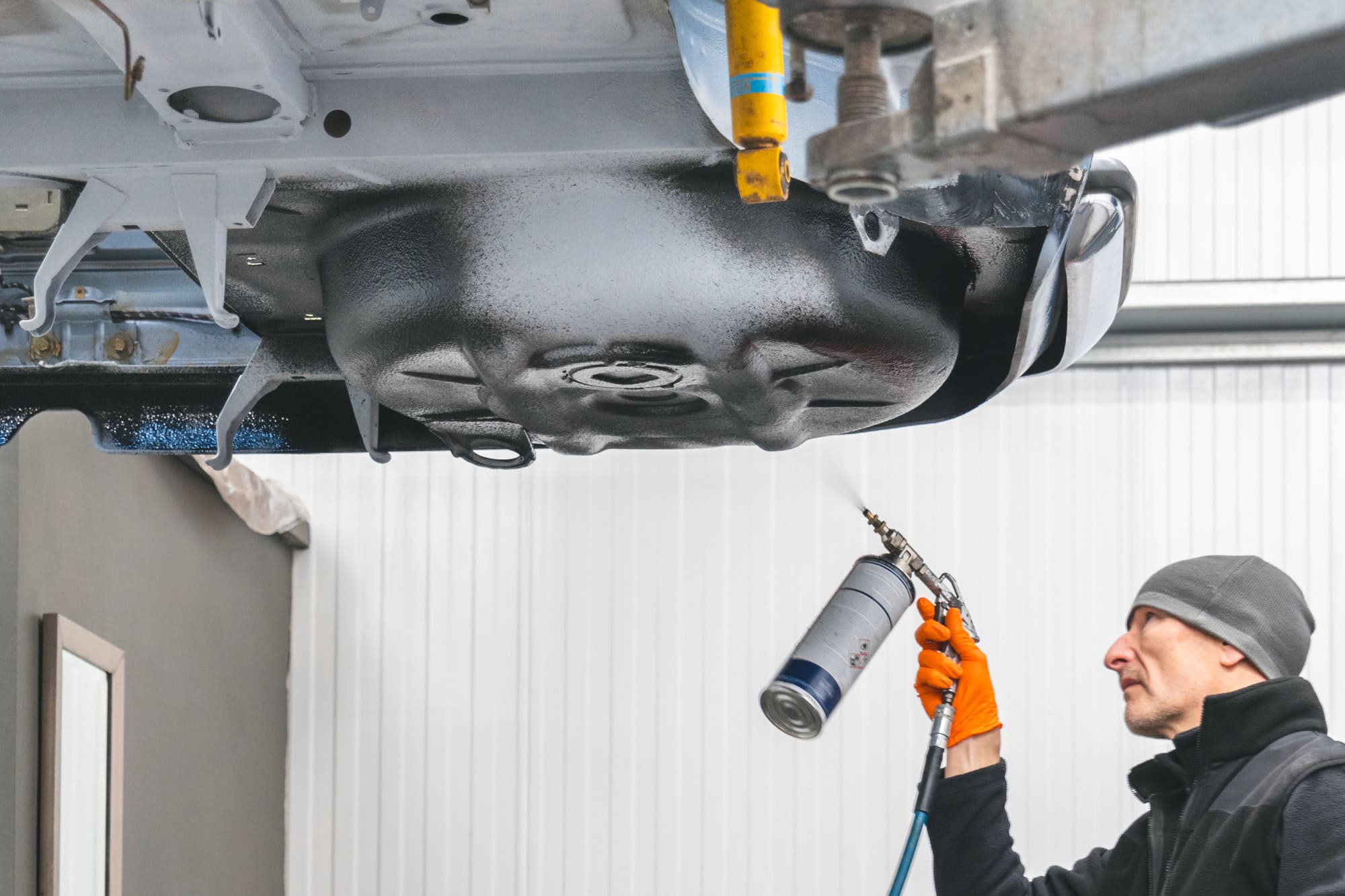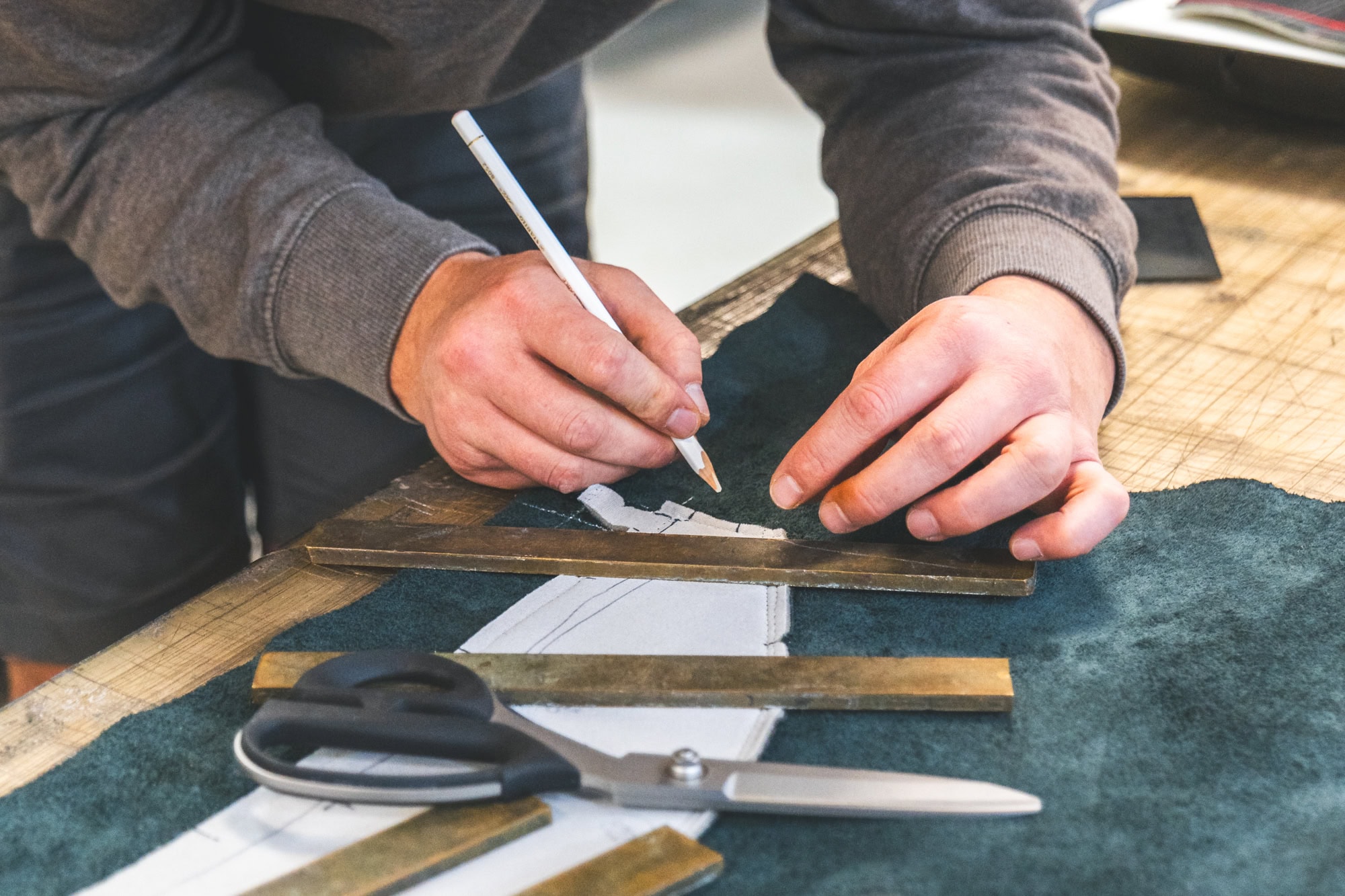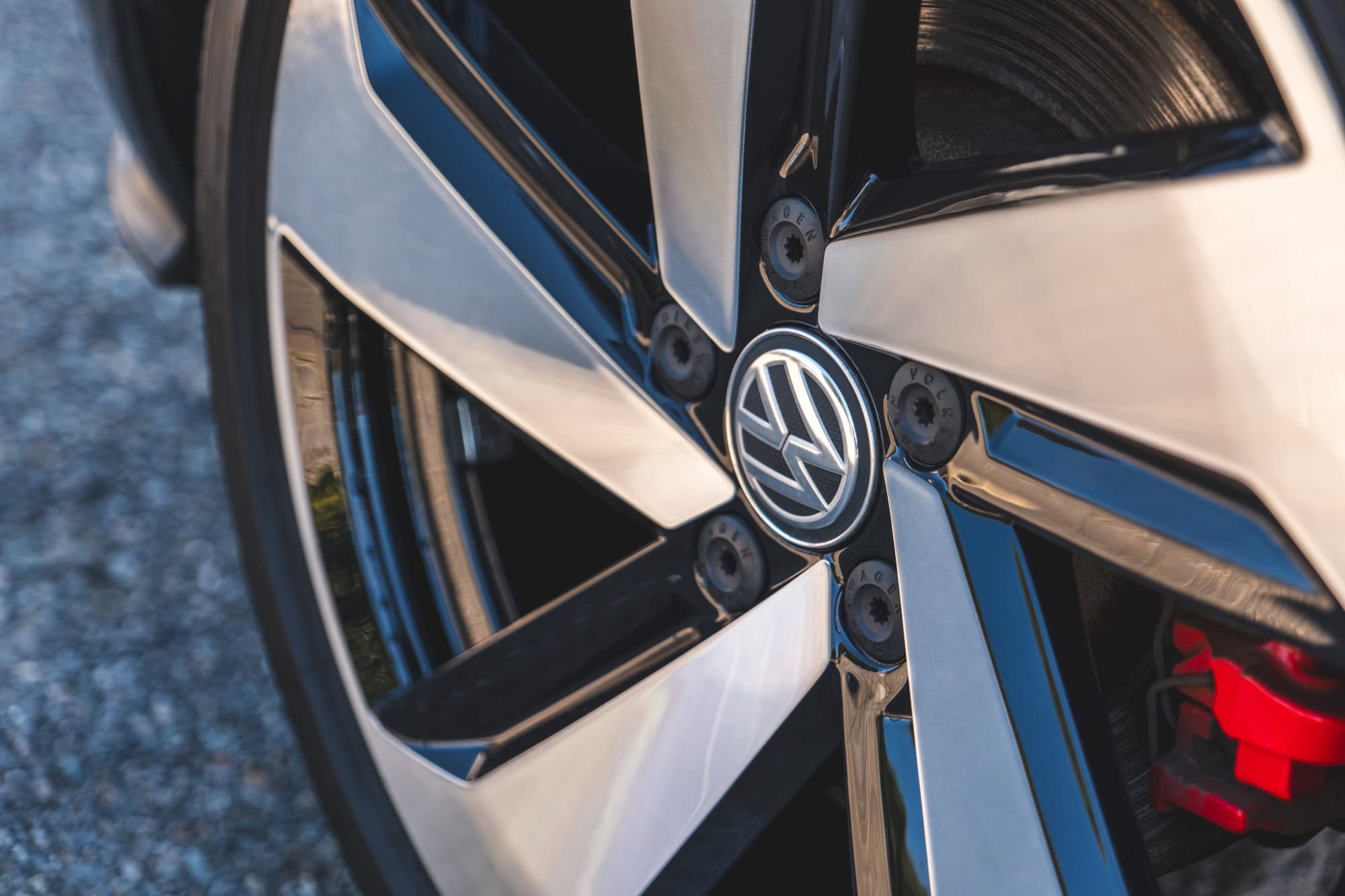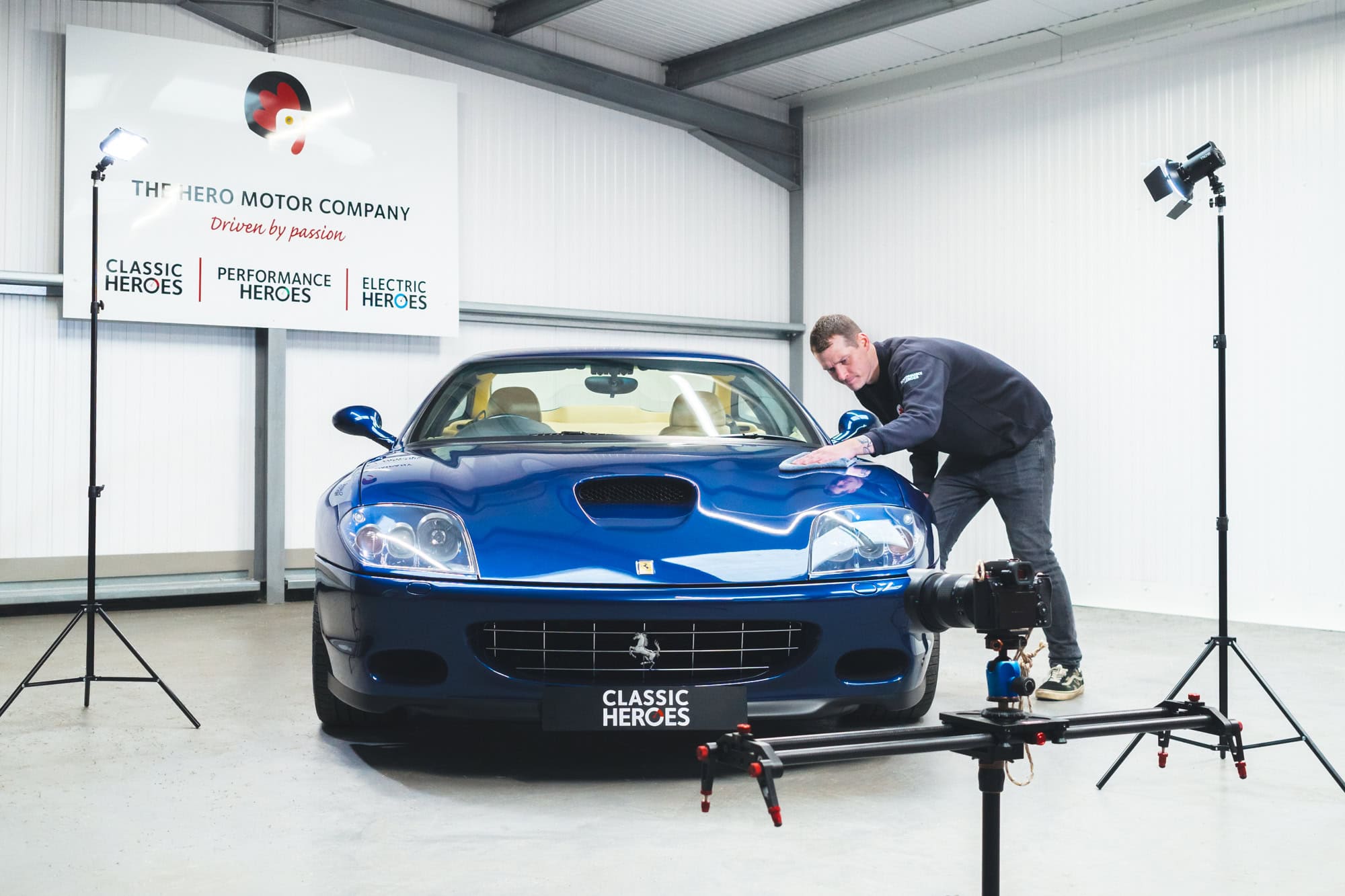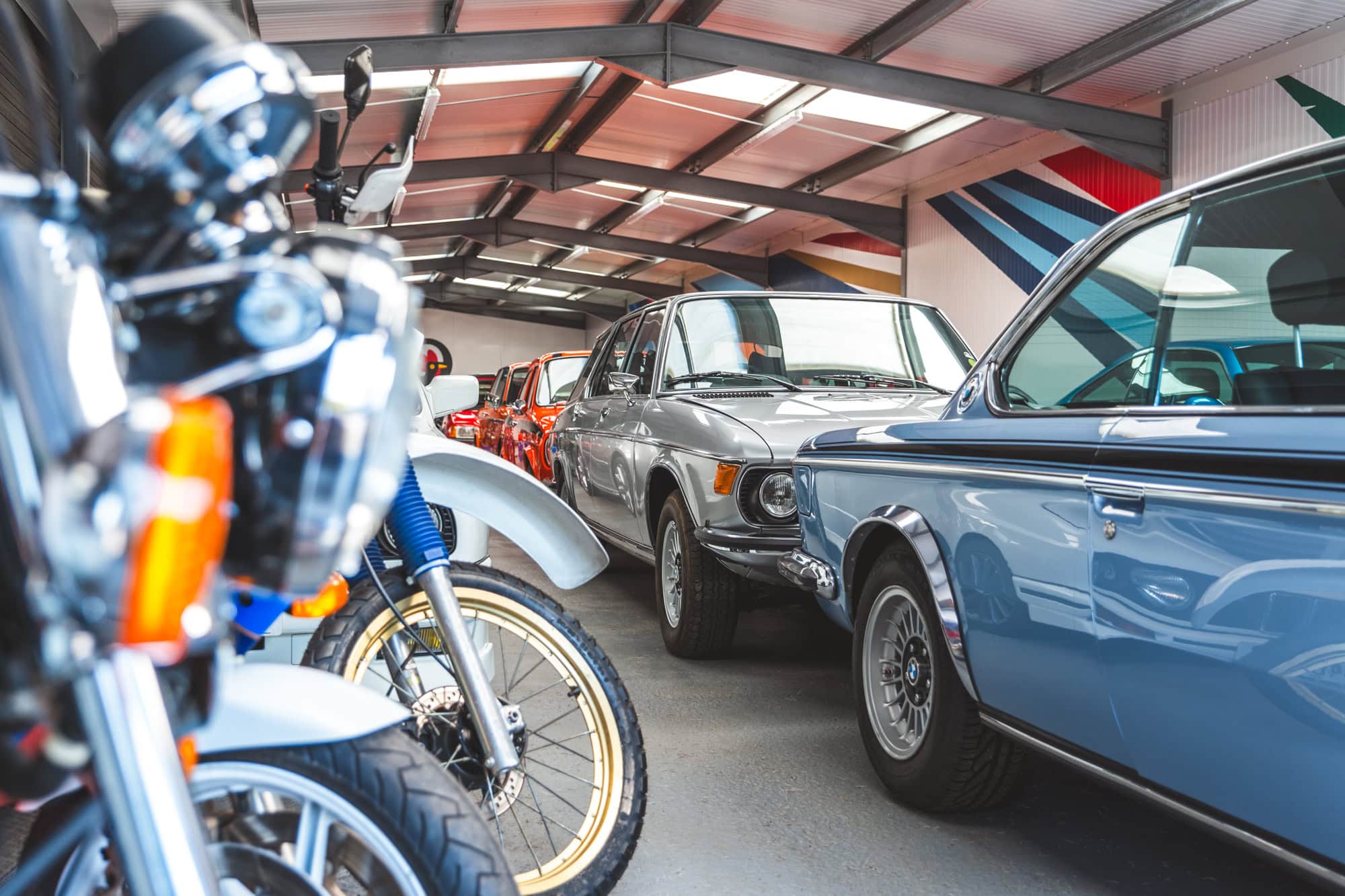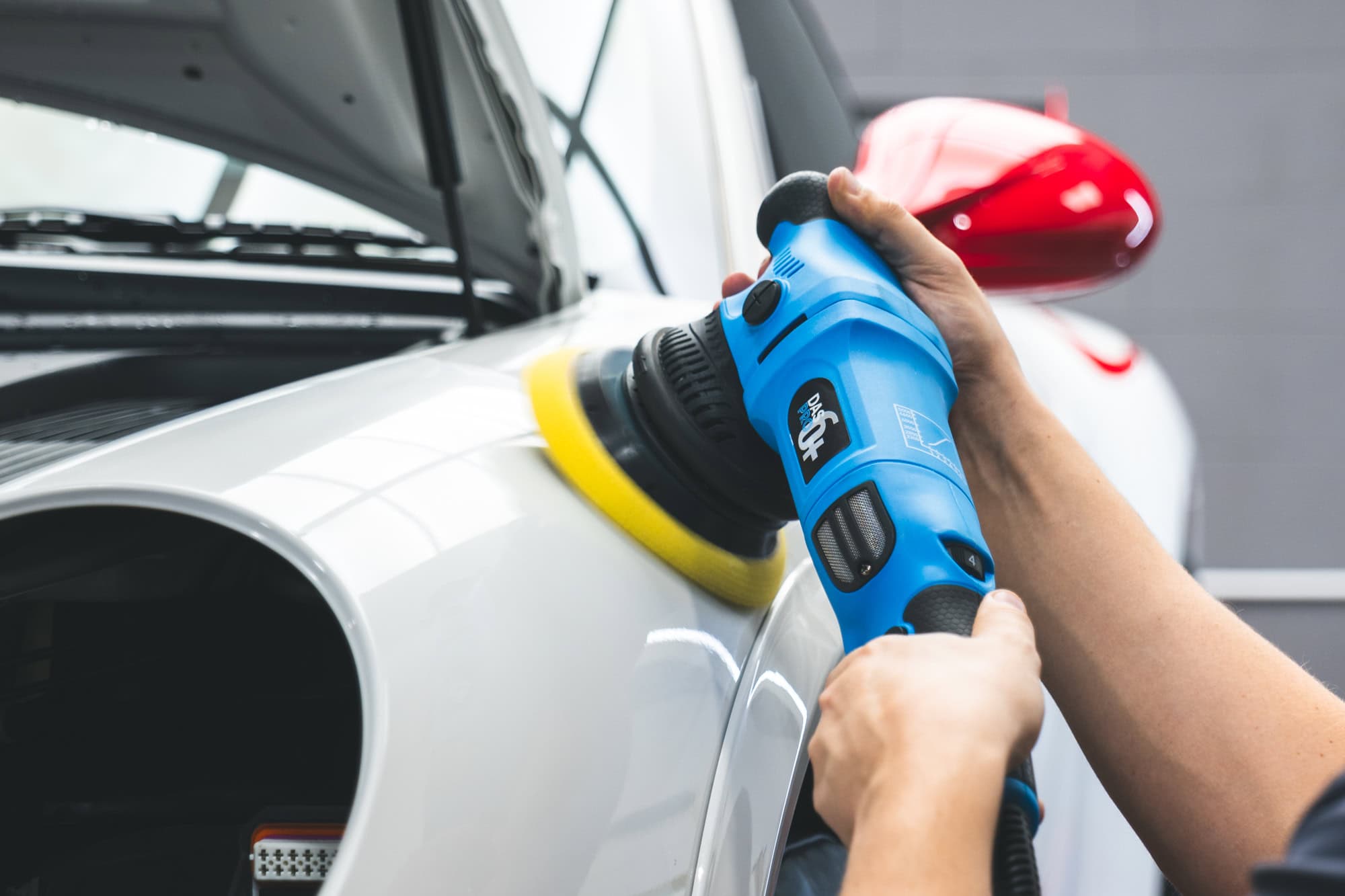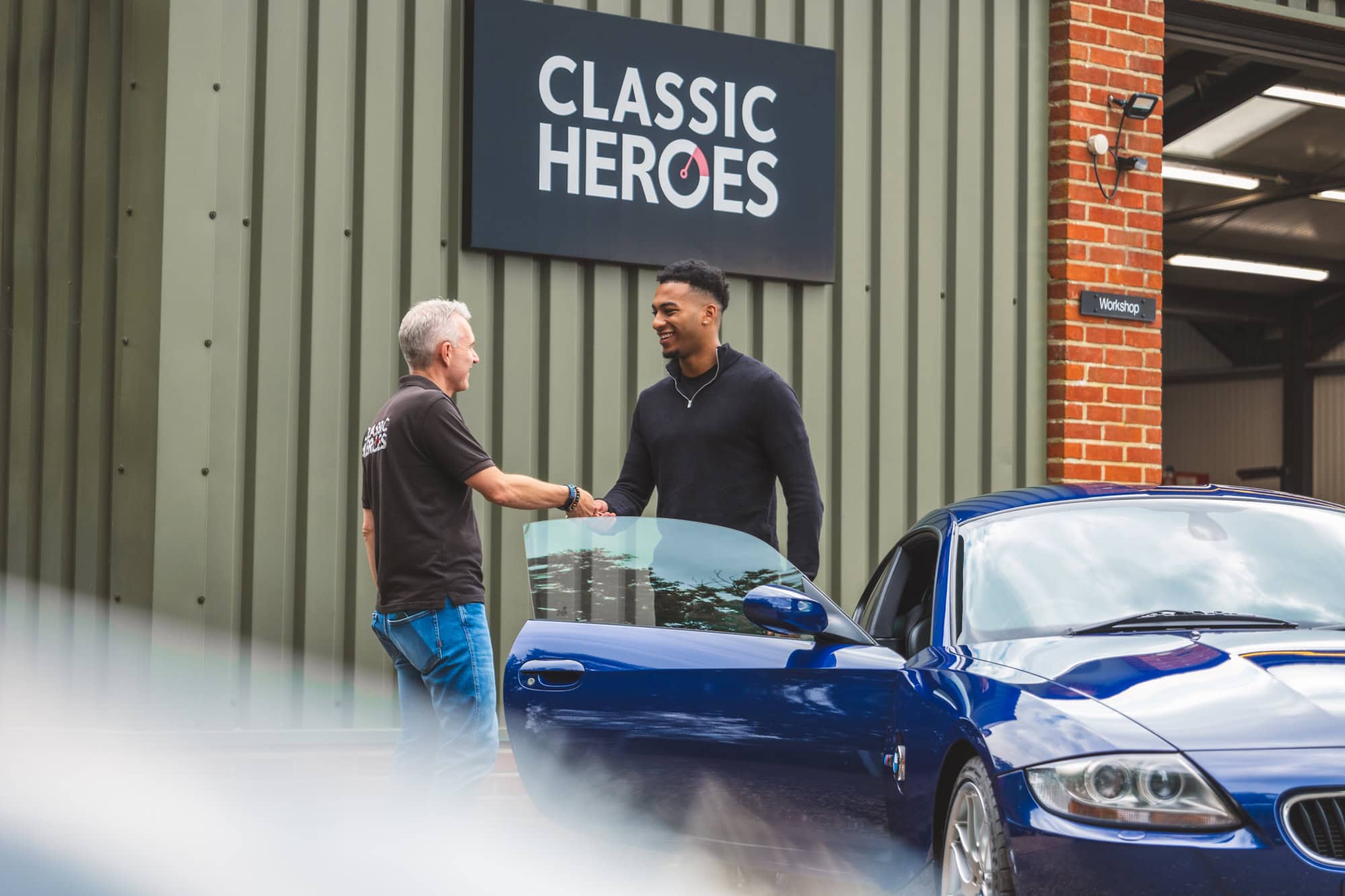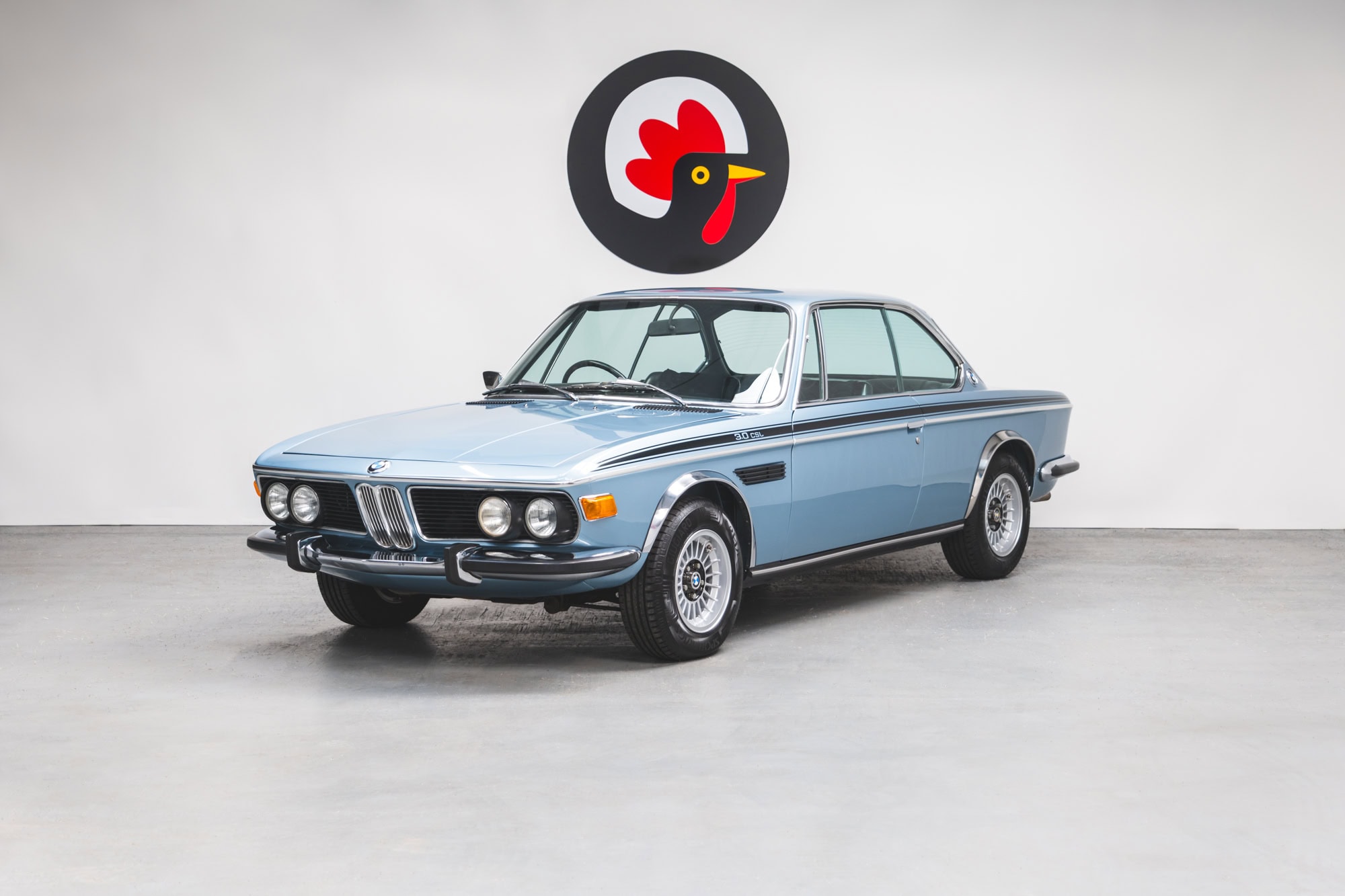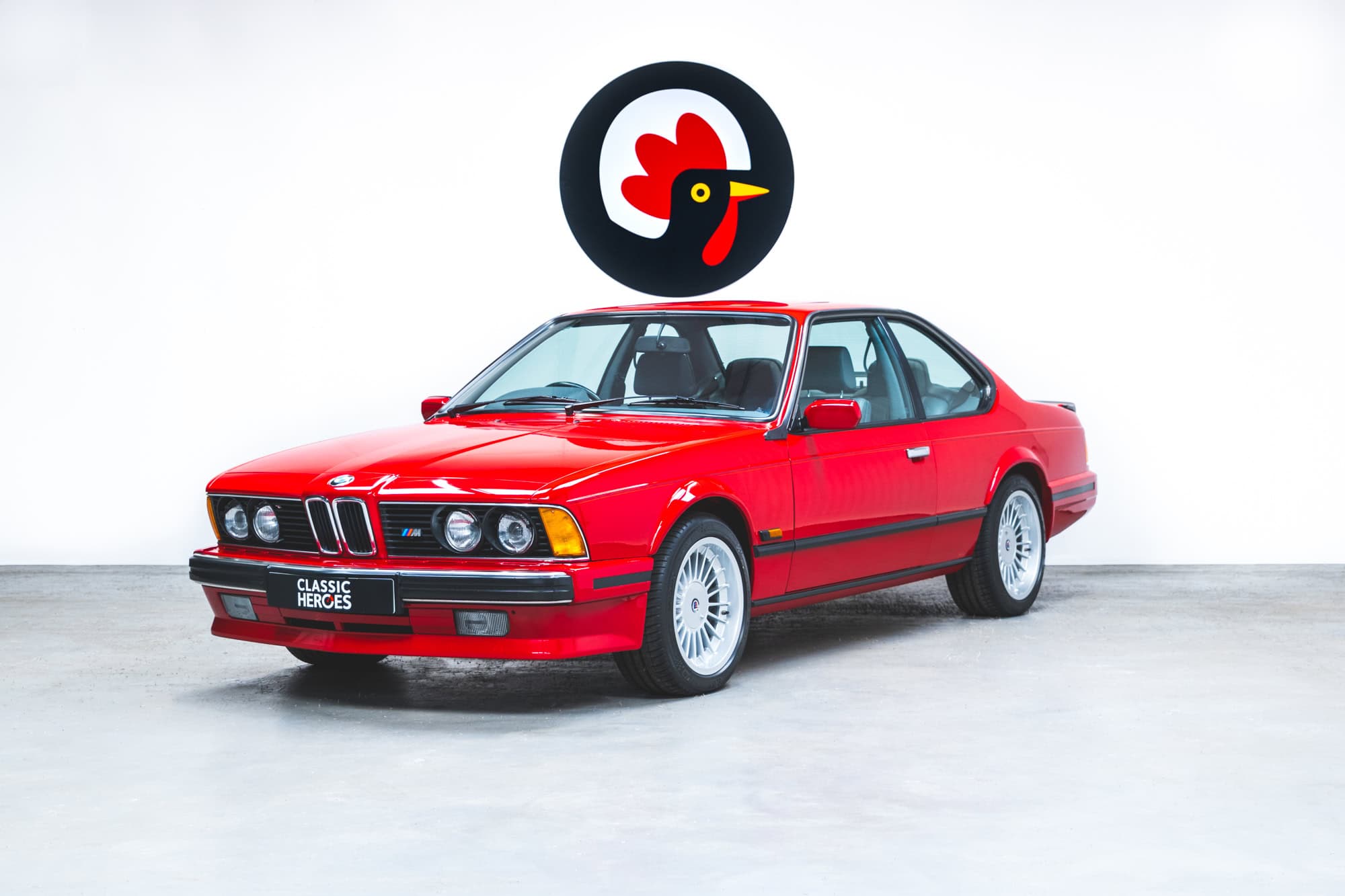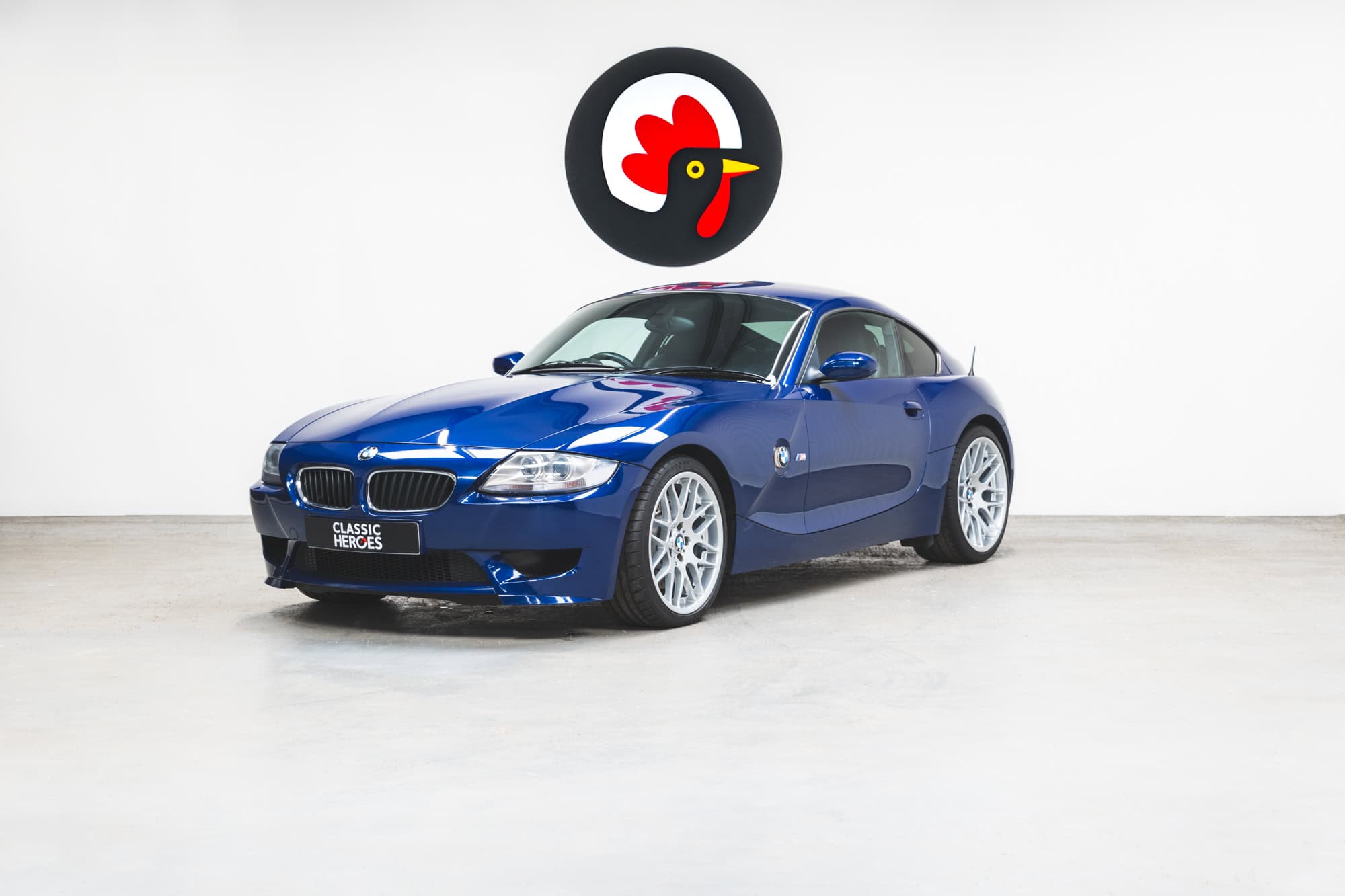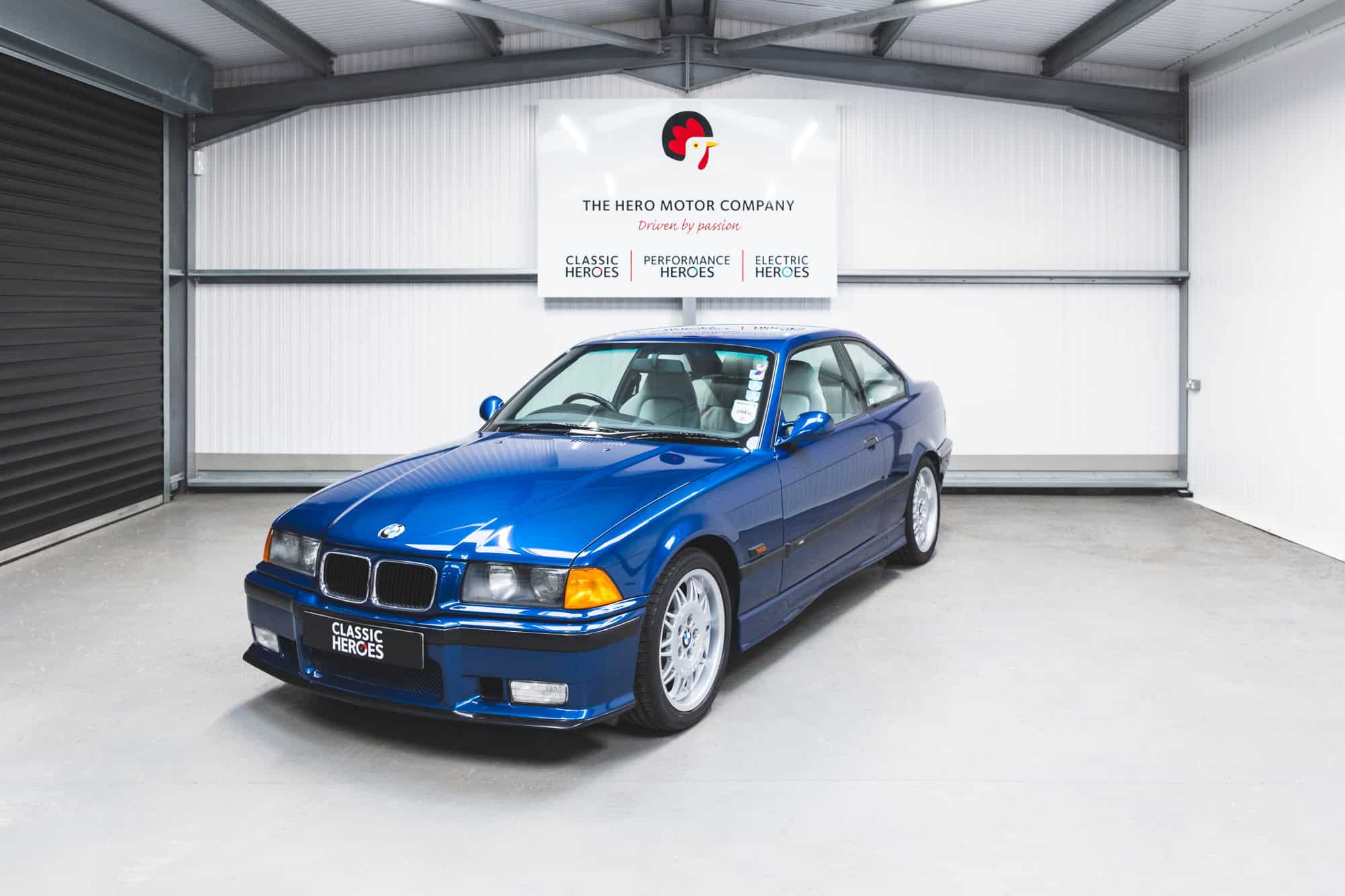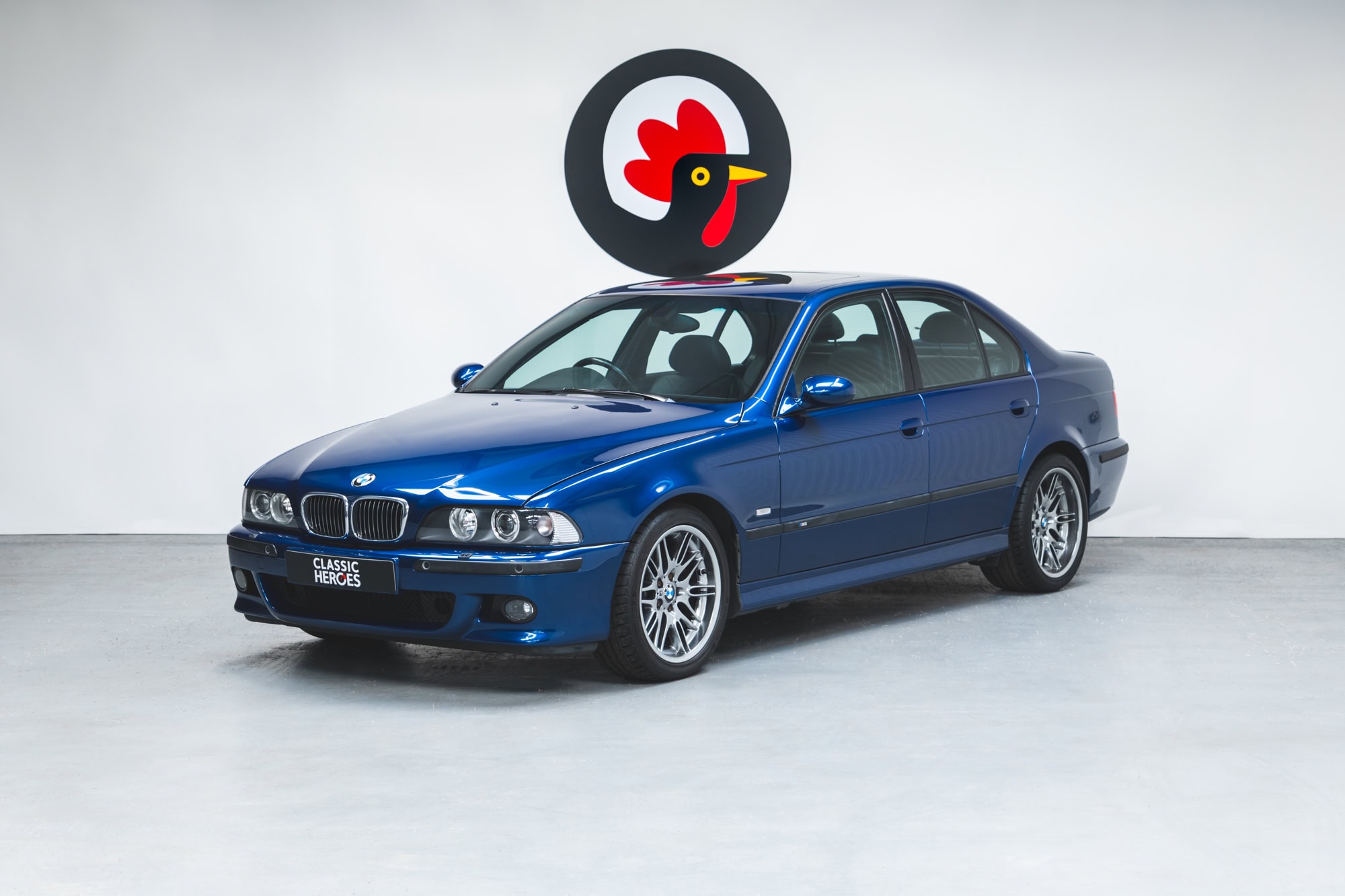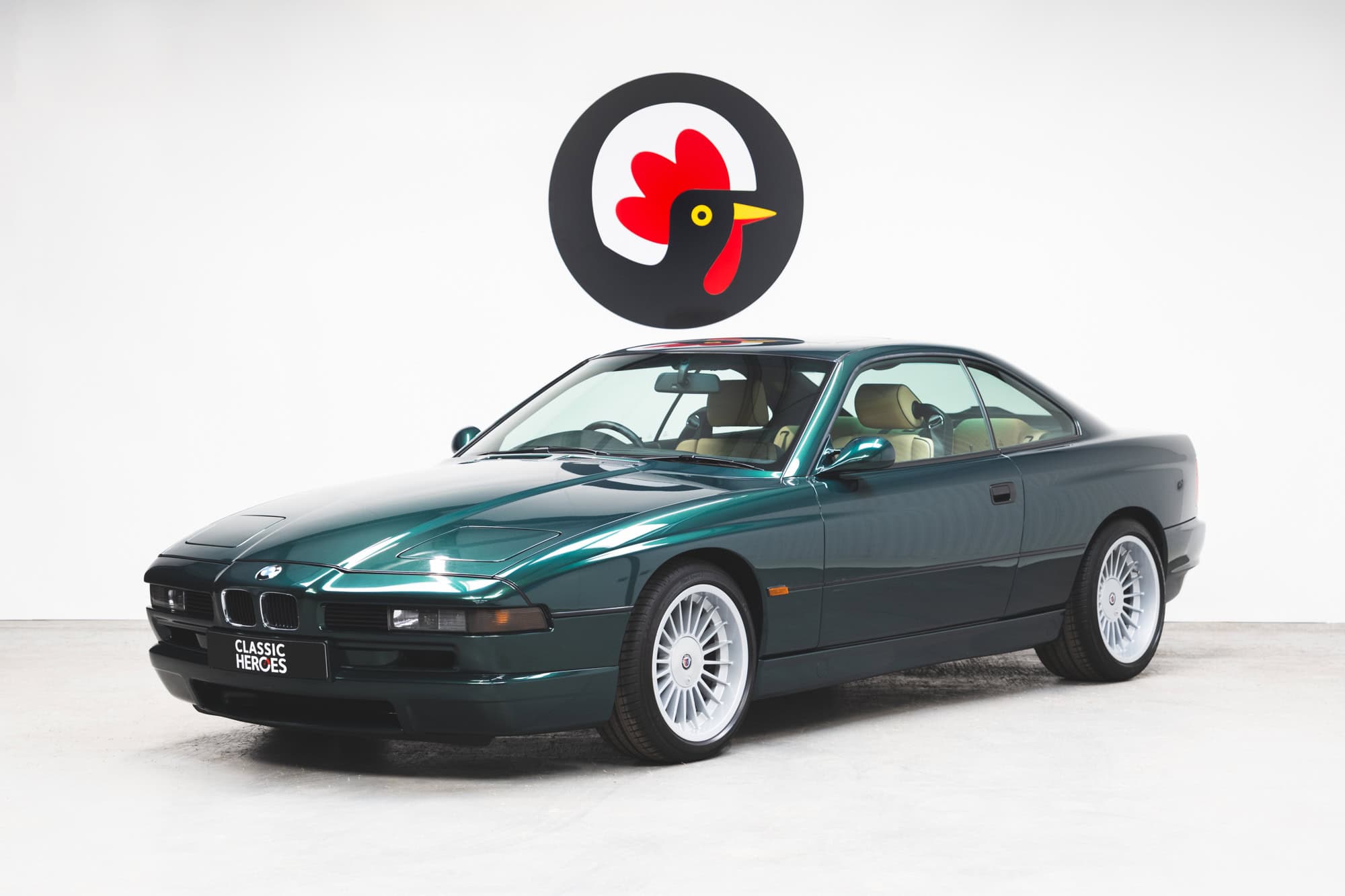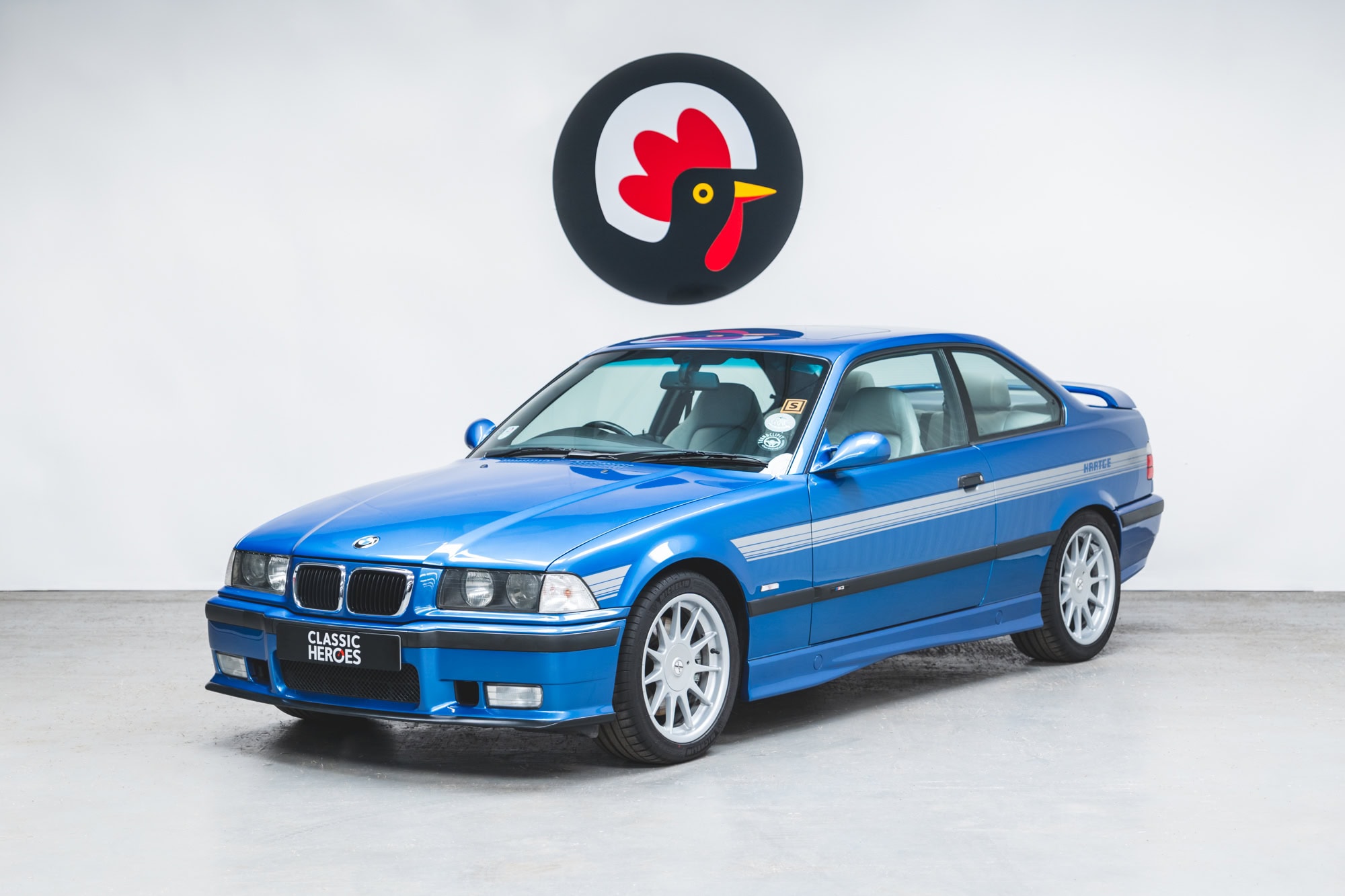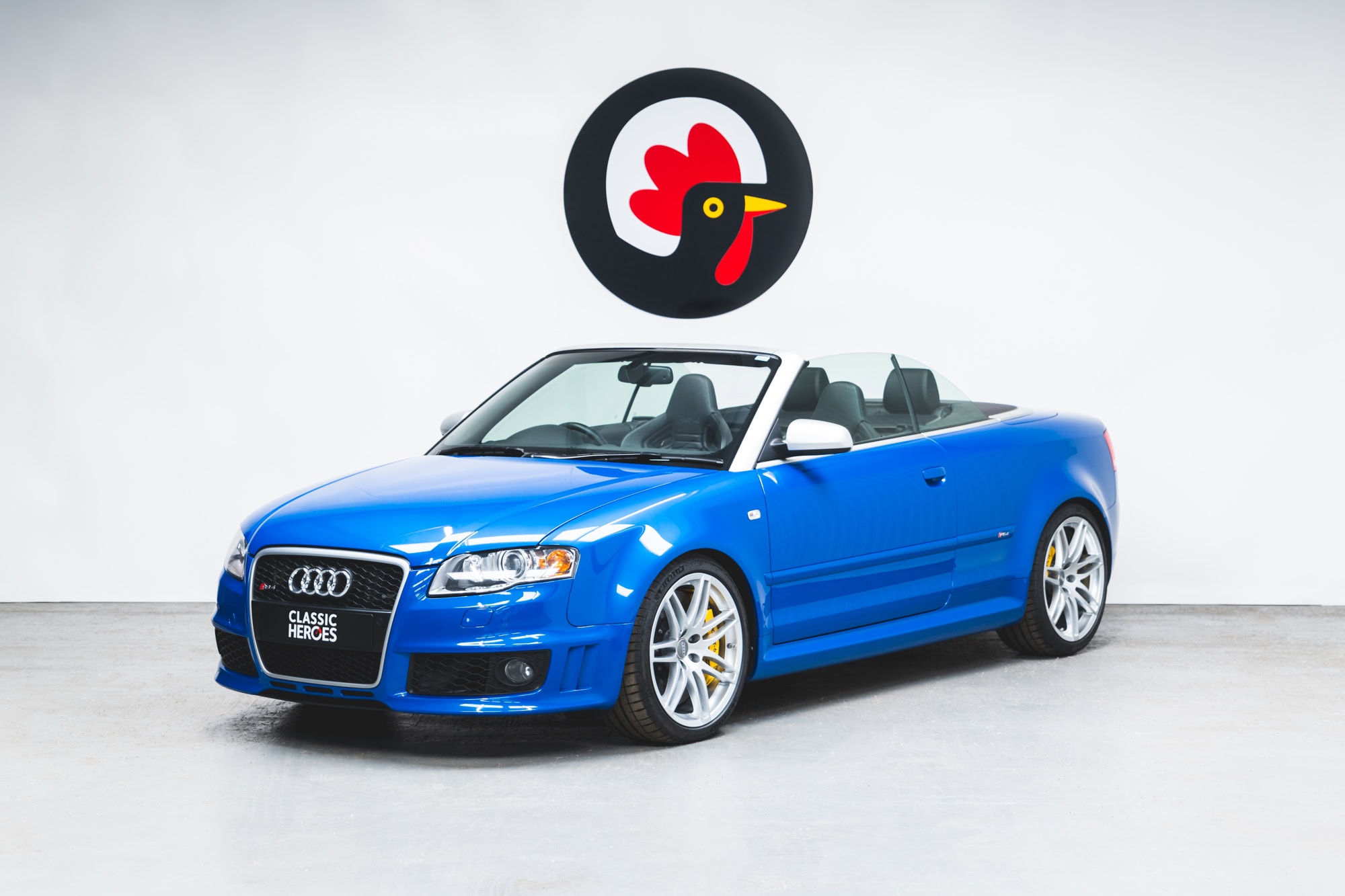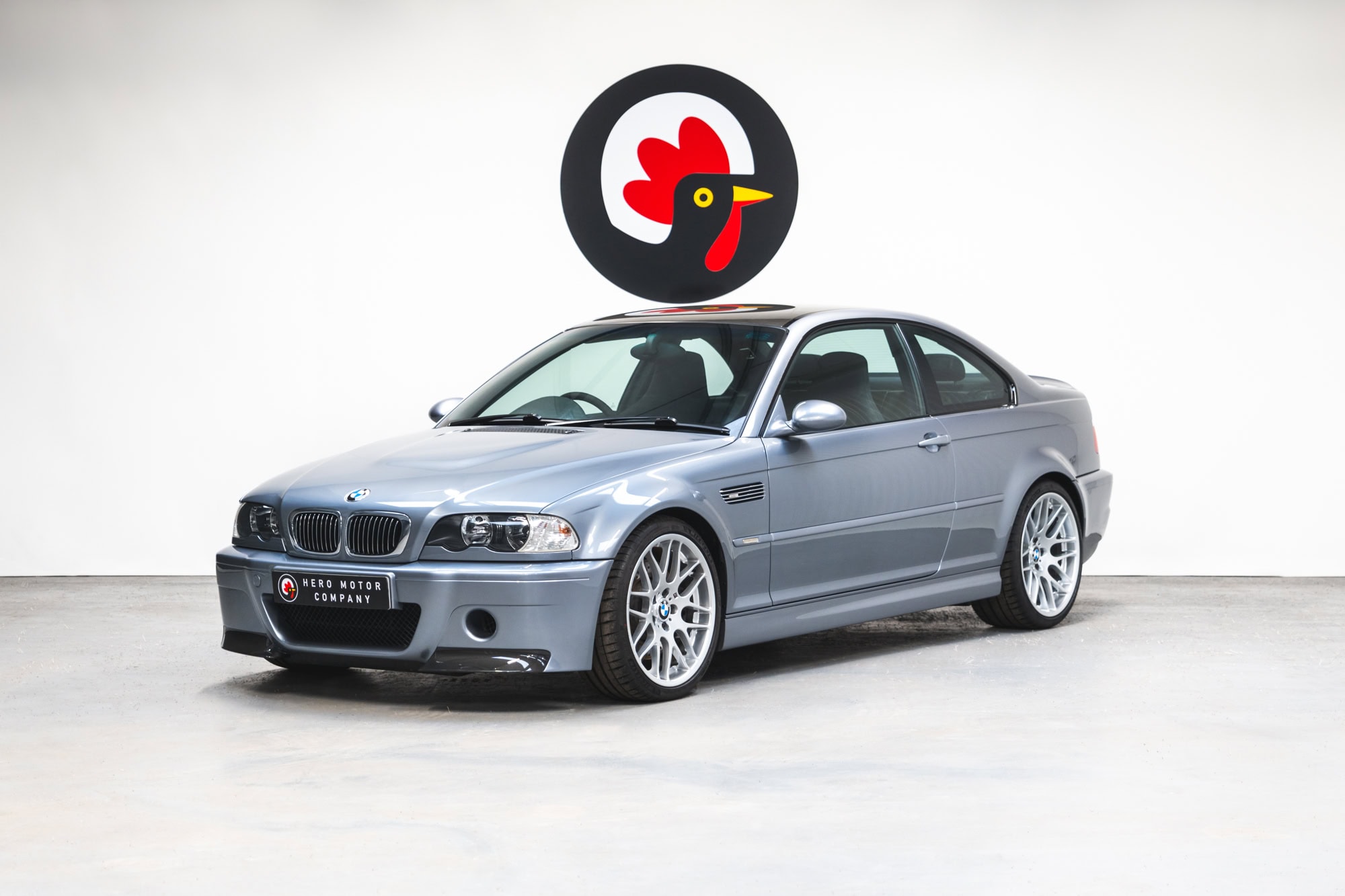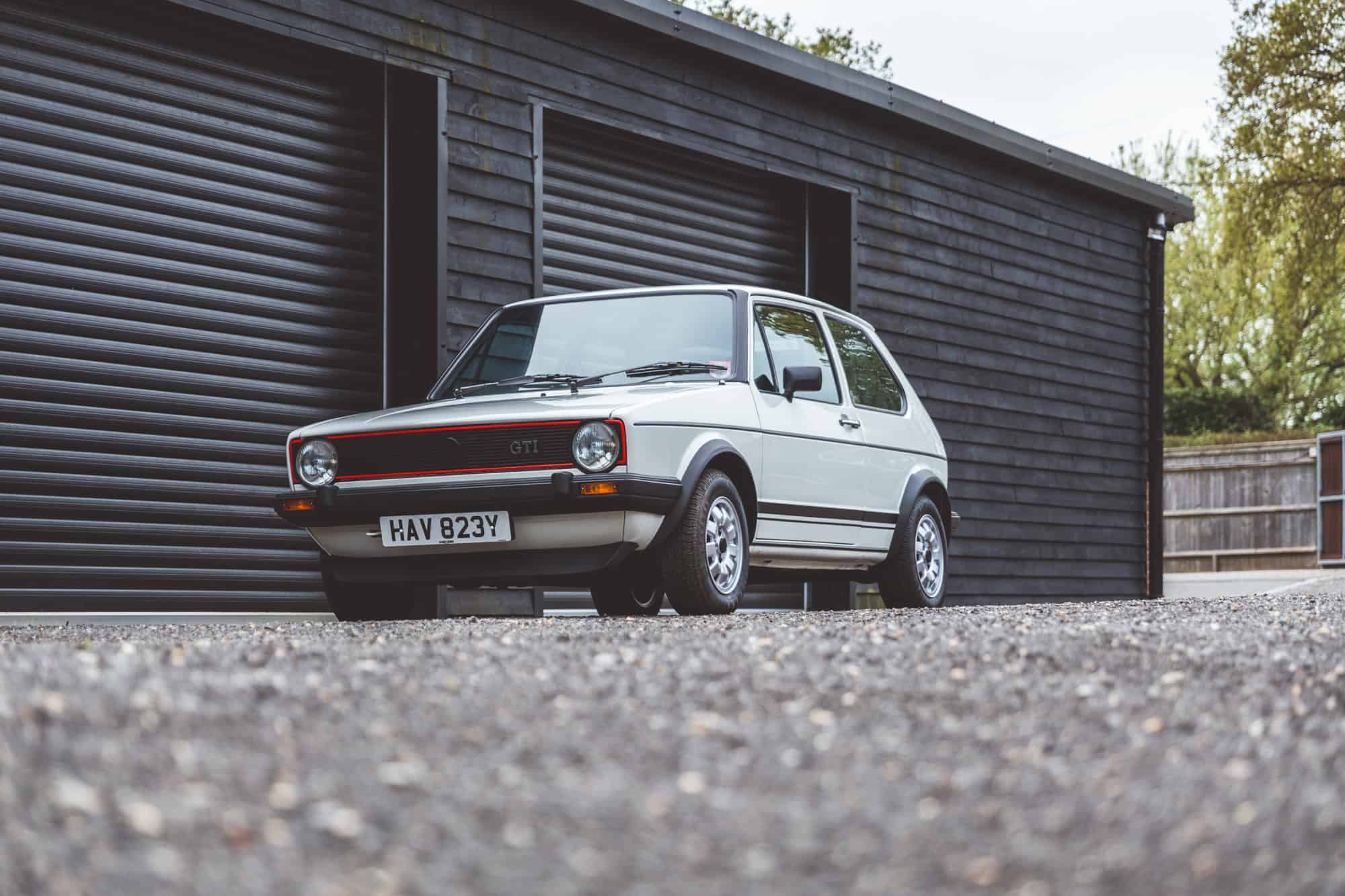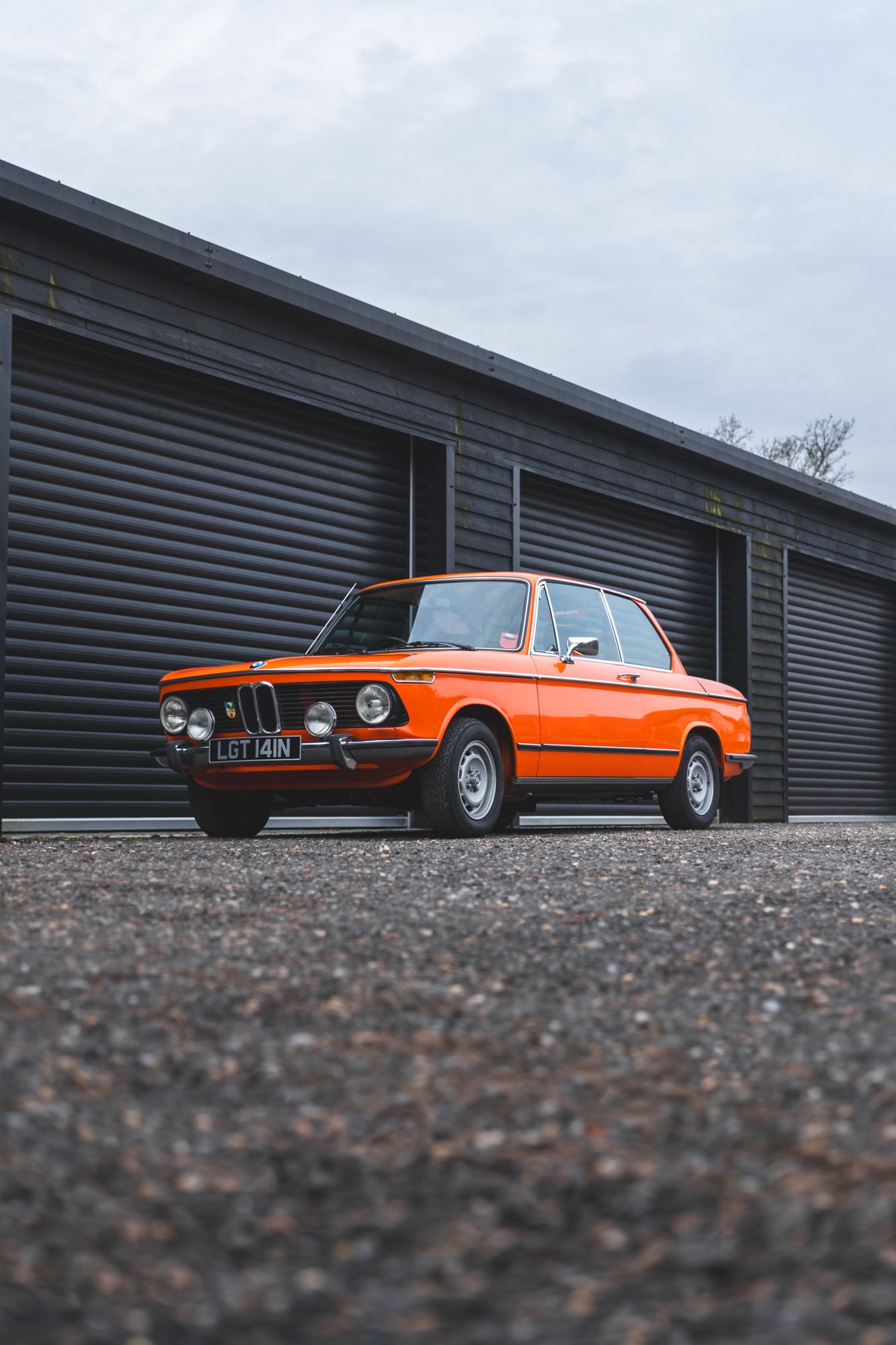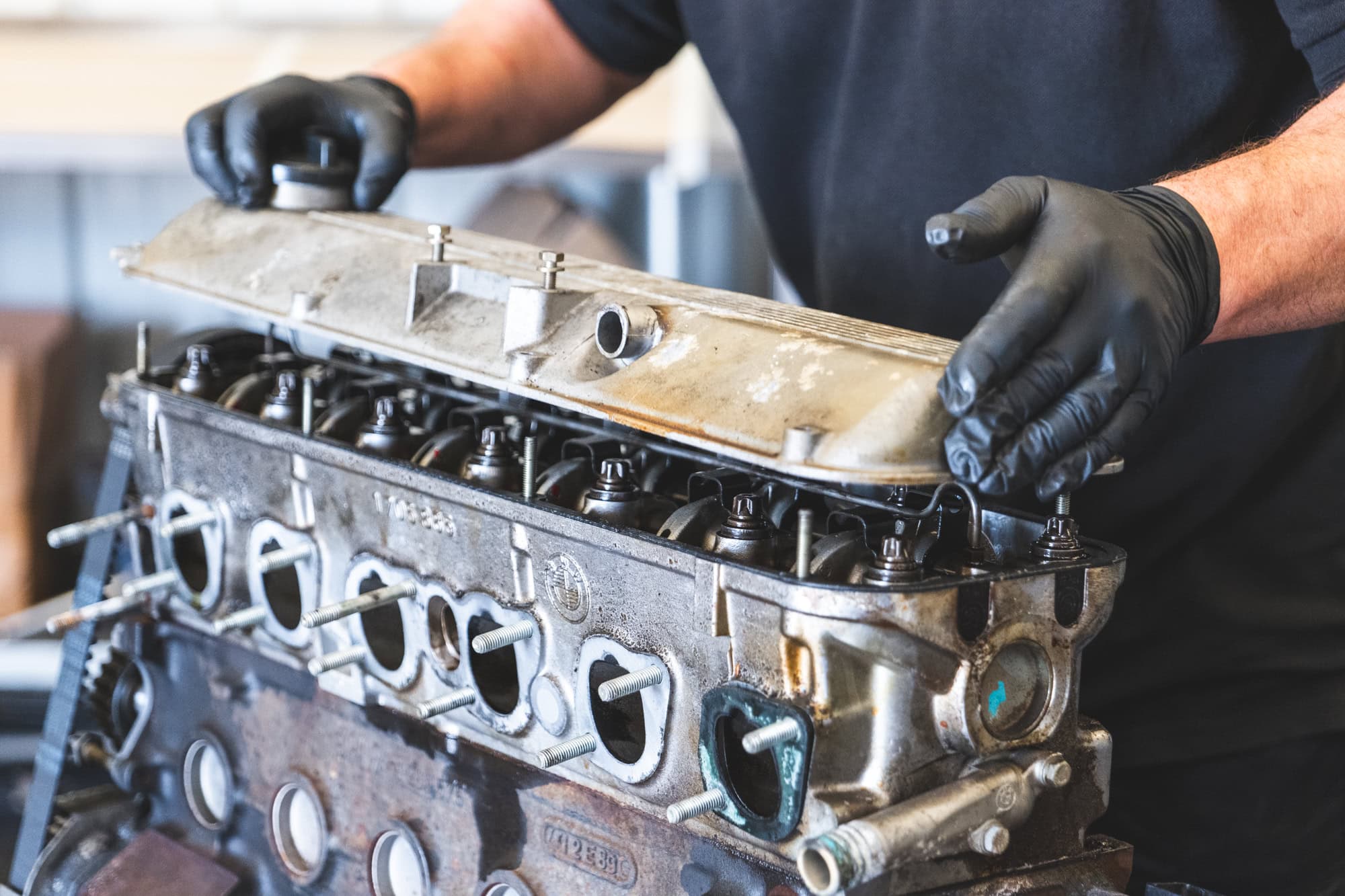 Servicing and Maintenance
Servicing and Maintenance
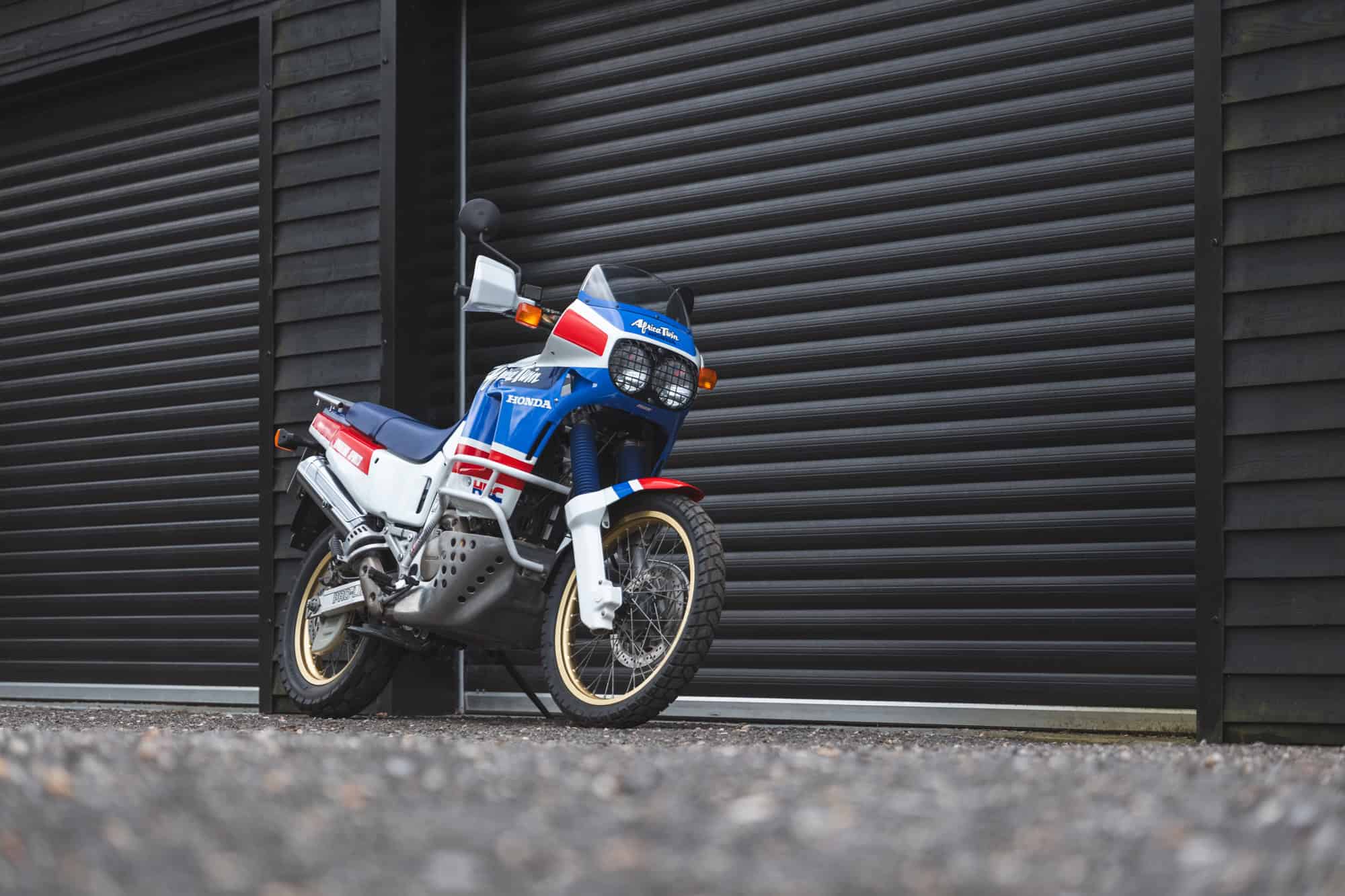
It would be impossible to describe how this legendary motorcycle ended up in our collection of heroes without first talking about the Paris-Dakar.
It’s difficult to imagine the popularity of the Dakar Rally in the 80’s without having lived through it. Ten thousand kilometres from the French capital to Senegal. Crossing through desert stages as far as 500 miles, pitting man and machine against the elements in the worlds ultimate endurance race.
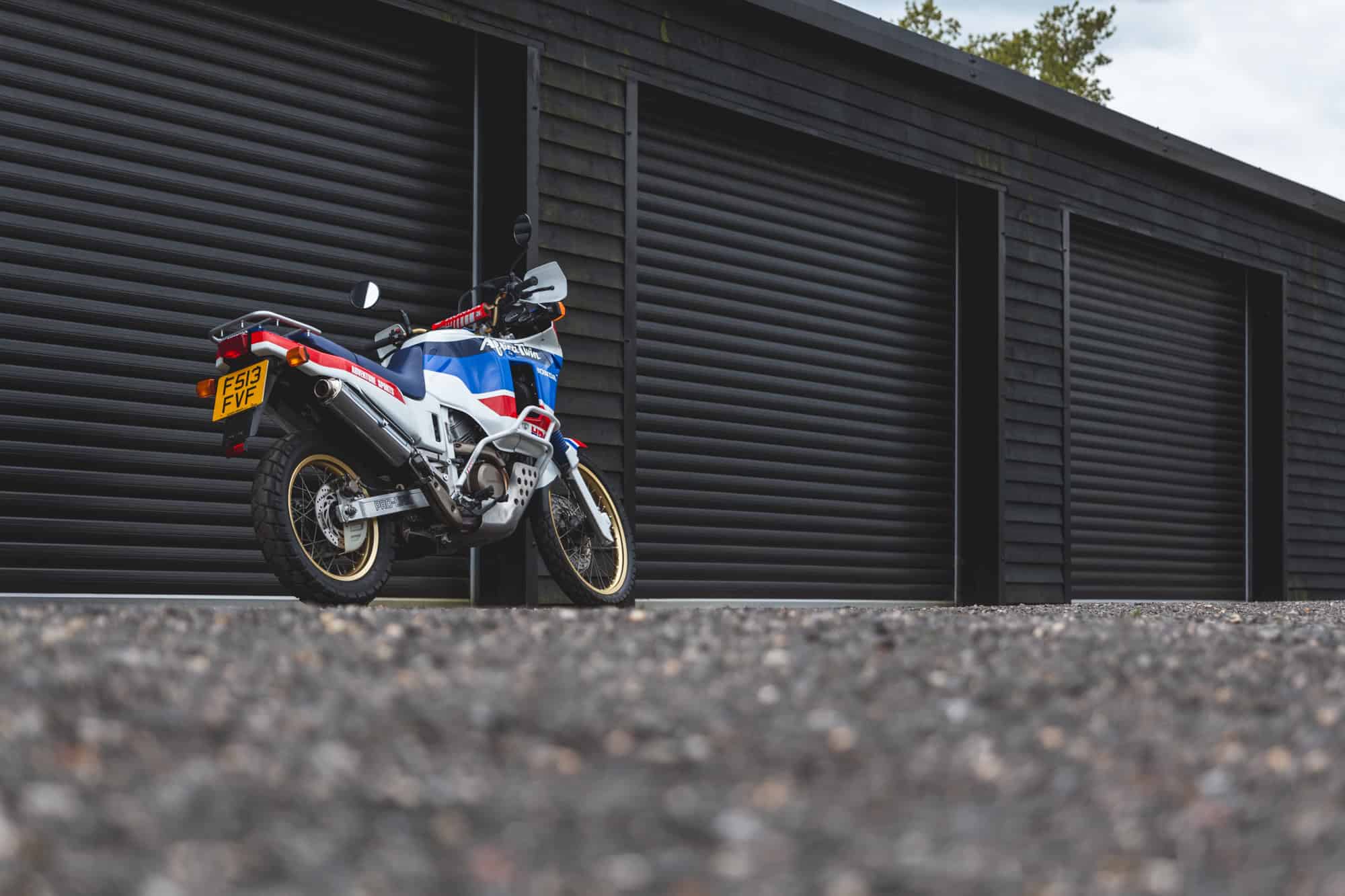
Introduced in 1979 by French native Thierry Sabine, the Oasis Rally, as it was known that first year, saw Yamaha win the rally on modified XT500’s, finishing 1st and 2nd places respectively in the motorcycle category, with only 34 of the original 90 entries completing the distance. The following year would prove it wasn’t a fluke, as the Yamaha team were once again the 1st through 4th across the line.
As you can imagine, the resulting sales of XT’s was substantial to say the least. BMW certainly took note, developing and then entering their own R80G/S, claiming 1st in 1981 with teammate following in 4th behind the Yamaha XT’s.
The following year would prove mechanically problematic for the BMW team, however waiting in the wings was a new entry from Honda, which would take the win. Honda knew that longterm their existing line up of singles would be hard pressed to fend off the German Flat-Twin competition and so in late 1984, the Honda Racing Corporation (HRC) was created. What followed would help shape the genre of adventure bikes as we know it today.
Purpose built from the ground up by HRC and with their sights fully set on dominating the 1986 Dakar, the NXR750 would take shape.
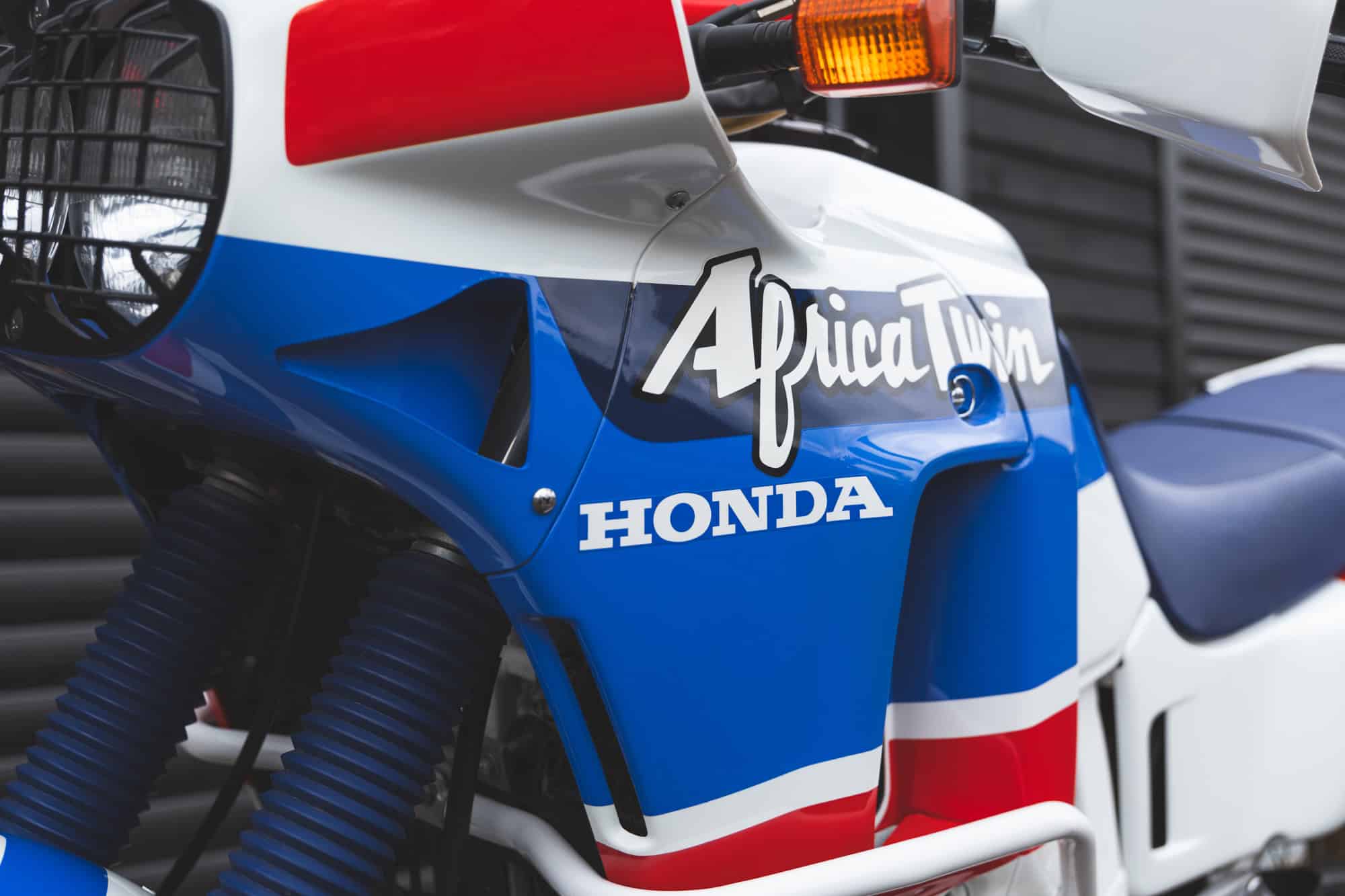
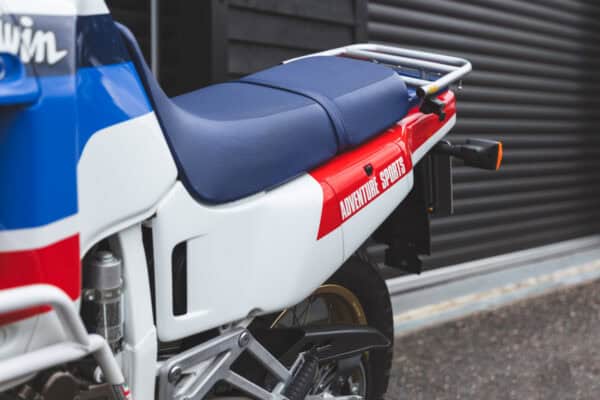
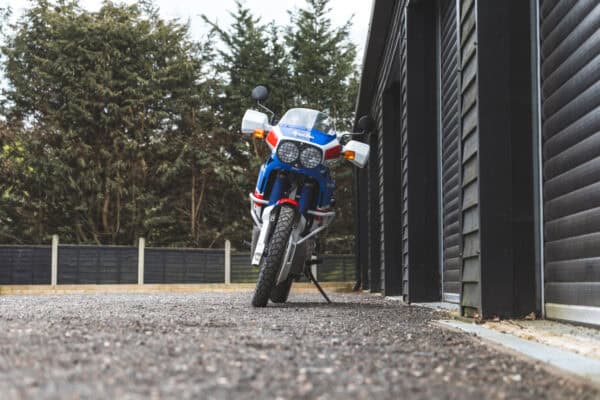
With a top speed of 112mph and comfortable sitting at 95mph in up to 50°C temperatures thanks to a liquid cooled V-Twin 779cc engine. A clever 45° angle cylinder and 90° crankshaft configuration allowed the overall package to remain as slender as a single cylinder engine. The narrow footprint of the Africa Twin would proove useful for tight offroad terrain, aided by a lower centre of gravity over the competition, despite the huge fuel tank. The unconventional 24-litre saddle-bag design of the fuel tank further added to the low down weight distribution and was capable of a range of around 280 miles from the 70bhp twin.
Light enough at around 190kg for the rider to manouver when stuck, and in true Honda fashion, reliable -with only a small compliment of tools required to complete most maintenance tasks in the field.
Honda’s efforts paid dividends, as that year’s Paris Dakar 1986 came to a close, Honda’s NXR750 took first and second place with Cyril Neveu and Gilles Lalay at the yokes. Honda immediately began work on turning this factory built race bike into a reality for the adventurous consumer. The rest, is history.
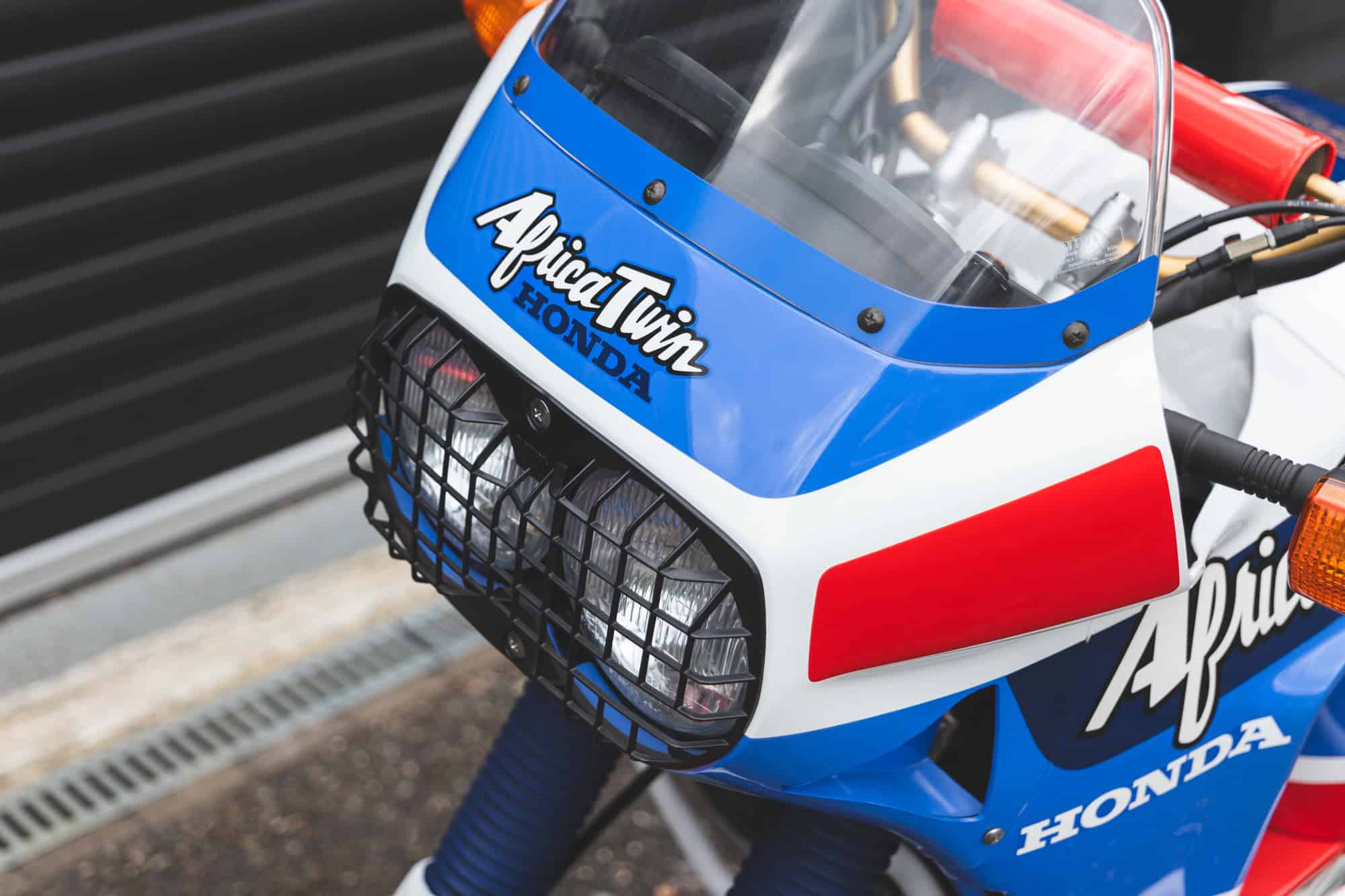
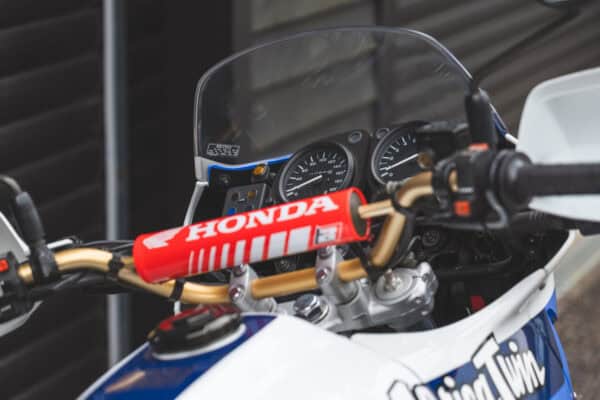
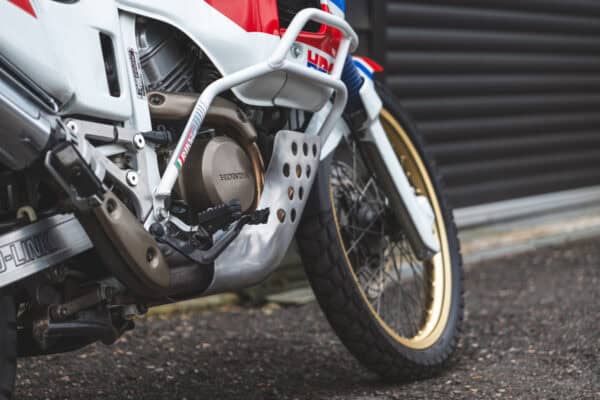
The Africa-Twin
Named the Africa-Twin in honour of it’s birthrace, the RD03 as it was internally known retained as many details of the original bike as the accountants at Honda would let them, and when the accountants deemed a feature too cost prohibitive, the engineers polietly insisted.
Luckily for us, the engineers got their way more often than not! The headlight grill of the NXR remained, as did the quick release system for the fairings and engine bash plate, both costly to the manufacturing process but essential to the spirit of the
Dakar that inspired the project.
The new XRV650 Africa Twin produced 57bhp (43kW) @8000rpm from a 647cc liquid-cooled 52° V-Twin engine. Powerful brake discs front and rear, long travel suspension and a mono-shock rear swing arm helped to increase ground clearance for riders who wished to take this emerging adventure bike on their own travels.
True to the racing heritage, the RD03 weighs a mere 185kg dry, practically bantam weight in todays age of adventure bike that quite often come in at a quarter of a ton!
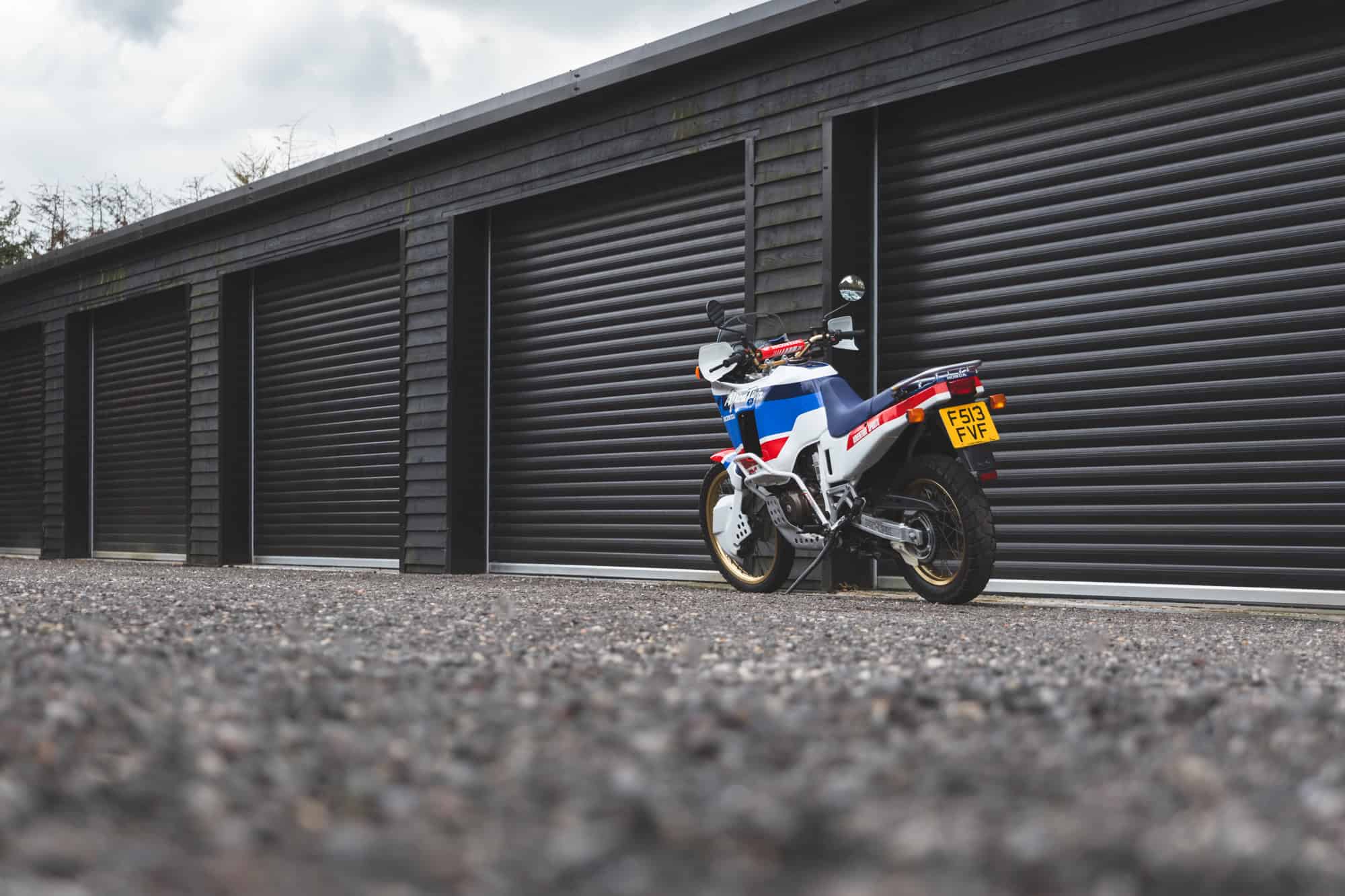
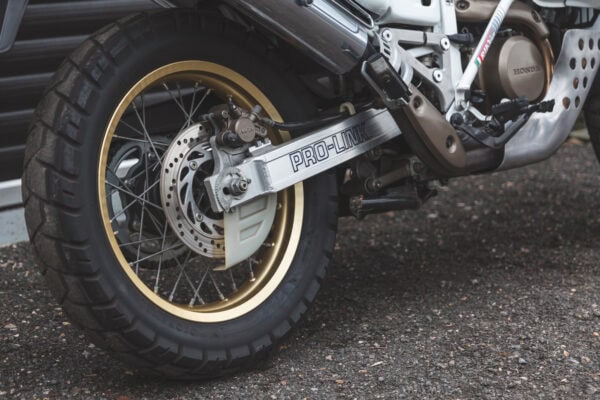
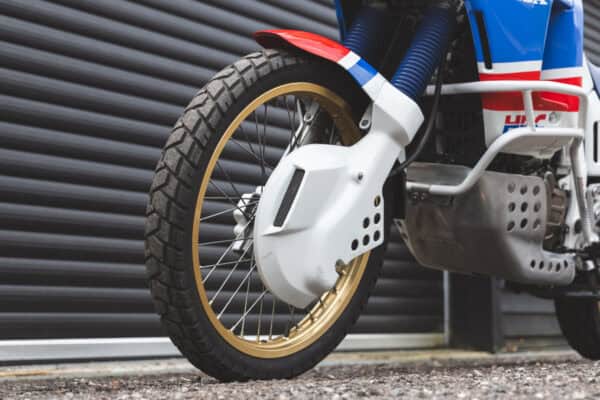
The Africa-Twin, still in production today, has always held a romantacism for us at Hero Motor Company. Enthralled by the glory of the Dakar, it awakened a spirit of adventure and we knew we needed to have one in our Hero Collection. To honour those who came before and conquered the worlds toughest race.
Our Thoughts
The Africa-Twin is a true hero of it's generation. It represented a different time in motorsport, an analogue world of exlporation before GPS and cruise control where those daring few who were brave enough to cross a continent could lean on their stalwart machine to carry them safely to a place many dream of and few ever reach.

